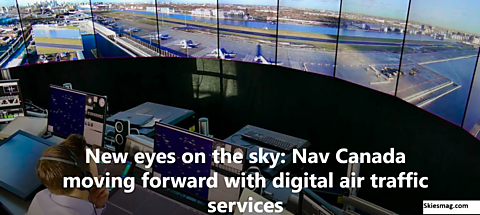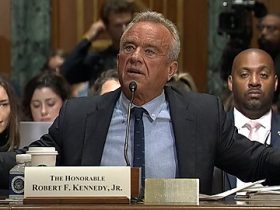Chris Edwards
Recent mishaps and disasters at American airports are raising concerns about the safety of our air traffic control (ATC) system. A tragic crash in Washington, DC, equipment outages in Newark, some near collisions, and frequent flight delays across the country have highlighted the backward state of our government-run ATC.
The Secretary of Transportation, Sean Duffy, is on the case, but so far, he is just proposing to throw more money at the problem. By itself, more money will not cure the ATC system’s deep flaws, which stem from trying to run a high-tech industry from within a bureaucracy at the Federal Aviation Administration (FAA).
With all the red tape, risk aversion, and political interference inherent in federal bureaucracies, the FAA’s performance may get even worse over time as global aviation demand continues rising and the skies get ever more crowded.
Congress must restructure ATC. The obvious reform model is Canada, whose ATC system has excelled for three decades as a self-funded, non-profit corporation outside the government bureaucracy.
Dorothy Robyn has a new piece on the ATC crisis in The Atlantic, and Bob Poole has a new piece in The Wall Street Journal. The two experts discuss the failings of our system, shortcomings of the Duffy plan, and the benefits of a Canada-style independent system.
Bureaucracy
Robyn: “The Trump/Duffy proposal is flawed in a host of ways, the most egregious of which is that it preserves the current ATC-governance structure. Blue-ribbon commissions and independent experts have long argued that this structure is the underlying source of our nation’s ATC problems. Simply stated, air-traffic control is a 24/7 high-tech operation trapped inside a regulatory agency. The FAA is bound by stultifying federal rules and sees Congress, not the traveling public, as its customer.”
Robyn: “Precisely because of the operational nature of air-traffic control, in fact, the federal government is poorly suited to run the system.”
Procurement
Poole: “A one-time multibillion-dollar infusion [the Duffy plan] won’t fix a broken procurement process. It could also undermine the modernization effort by botching the procurement of new systems. A much wiser policy would be to replace the business model.”
Robyn: “The FAA procurement culture is another constraint. Companies with transformational technologies struggle to gain traction in a stifling environment dominated by defense contractors and incentives for bespoke rather than off-the-shelf solutions.”
Antiquated Technology
Poole: “America’s ATC system employs a significant amount of outdated technology for which no replacement parts exist, partly because the FAA often waits until a unit fails before trying to repair or replace it.”
Poole: “Many [foreign] ATC providers buy replacement systems in bulk and roll them out to all facilities over a year or two. By contrast, the FAA in some cases takes 10 to 15 years to install replacement systems, by which time the systems may already be obsolete.”
Capital Investment
Poole: “The Federal Aviation Administration’s budget for facilities and equipment—a substantial portion of which goes to air-traffic control—has stayed roughly flat in nominal terms over the past decade, while the operations budget has soared. The 21 high-altitude air route traffic control centers, more than 100 approach control centers, and many hundreds of airport control towers are antiquated, and most need to be replaced.”
Political Meddling
Robyn: “The FAA also suffers from political interference … individual members of Congress routinely prevent the FAA from closing facilities it no longer needs—at a cost of hundreds of millions of dollars a year—and opening new ones it does need. Recently, Oklahoma lawmakers blocked legislation to authorize a second training academy for controllers for fear that it would pose a threat to the existing academy in Oklahoma City.”
Resistance to Change
Poole: “A single digital remote tower can manage many smaller control towers at lower cost and higher productivity. While these systems are expanding throughout Europe, the FAA has resisted this breakthrough innovation.”
Safety
Robyn: “Most important, the current governance arrangement jeopardizes safety, because the FAA both operates and regulates the air-traffic-control system. This is a clear conflict of interest, and one that the International Civil Aviation Organization has directed member countries to eliminate.”
Poole: “Nearly all countries served by ATC companies have also separated the provision of ATC services from aviation safety regulation.”
Trump Support for Restructuring
Poole: “On June 5, 2017, President Trump held an event in support of House Transportation Committee Chairman Bill Shuster’s ATC corporation bill, which proposed a nonprofit public utility similar to Nav Canada.”
Canada’s System
Robyn: “The Canadian ATC provider Nav Canada, the model for the 2018 House bill, is handling significantly more traffic with a smaller staff than in 1996. It beats the FAA on unit costs despite its smaller scale.”
Who Has Blocked Reform?
Robyn: “The Clinton administration’s 1995 bill to corporatize ATC was dead on arrival in Congress primarily because of pushback from private pilots and corporate-jet owners, who pay almost nothing to use the ATC system. The same dynamic played out in 2018 …. Skeptical that such largesse would continue under a privatized system, the corporate-jet trade association, flying under the cover of the much larger private-pilot lobby, persuaded Congress to keep air-traffic control stuck in the previous century.”







